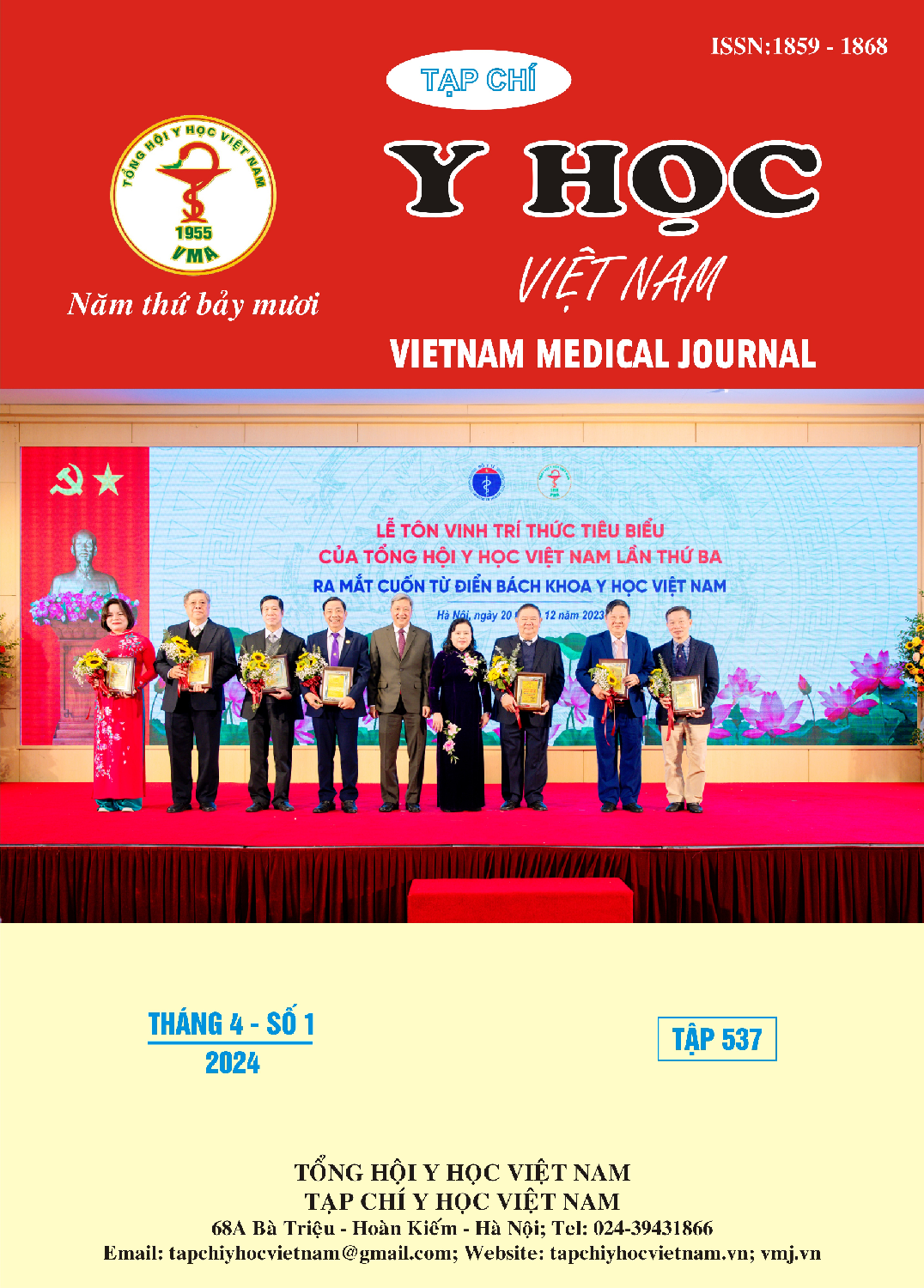AST, ALT ENZYM ACTIVITY IN PATIENTS WITH DENGUE HEMORRHAGIC FEVER
Main Article Content
Abstract
Background: Dengue fever is an acute infectious disease caused by the Dengue virus, with the Aedes aegypti mosquito serving as the disease vector. Hepatic dysfunction is a significant characteristic observed in Dengue virus infections. Its impact on the liver often lacks symptoms but can vary in severity. The elevation of transaminase activity without symptoms of acute liver failure, with varying other manifestations, presents a significant challenge for treating physicians. Objectives: Surveying the changes in AST, ALT activity, and clinical characteristics in dengue hemorrhagic fever patients at Le Van Thinh Hospital in 2022. Methods: Retrospective study of patients aged 18 years and older, diagnosed with dengue fever according to the standards of the Ministry of Health in 2019. Results: Among a total of 142 patients, there are 108 cases of dengue hemorrhagic fever, 34 cases of dengue fever with basic symptoms, and no cases of severe dengue hemorrhagic fever. Gender distribution showed that 58 (40.8%) patients were male, and 84 (59.2%) were female. Clinical features included gastrointestinal symptoms (54.9%), muscle pain (32.4%), and subcutaneous hemorrhage (21.1%). Clinical laboratory findings revealed that 85.9% of patients had elevated AST (Aspartate Aminotransferase), and 64.7% had elevated ALT (Alanine Aminotransferase). AST exhibited a more significant and frequent increase compared to ALT. The degree of AST and ALT elevation primarily ranged from 1 to 3 times the normal levels. The increase in AST by 1 to 3 times the normal levels was more common in the NAFLD group. Conclusion: AST and ALT enzyme activities change in dengue hemorrhagic fever. Regularly screen liver enzymes in Dengue Fever patients to detect early liver damage, aiding in timely assessment and treatment
Article Details
Keywords
Dengue fever, AST, ALT
References
2. Nguyễn Minh Hùng, Phan Thị Diệu Hiền (2022). Mô tả đặc điểm lâm sàng, cận lâm sàng của sốt xuất huyết Dengue và sốt xuất huyết Dengue có cảnh báo ở người lớn tại bệnh viện Hồng Đức 2020 – 2021. Tạp chí y học Việt Nam, tập 520 tháng 11 năm 2022.
3. Dương Thị Hường (2021). Nghiên cứu sự biến đổi của chỉ số AST, ALT ở các bệnh nhân sốt xuất huyết Dengue điều trị tại bệnh viện E năm 2019, Khoá luận tốt nghiệp ngành Y đa khoa trường Đại học Y dược - ĐHQG Hà Nội.
4. Đoàn Văn Quyền & Ngô Văn Truyền (2014), Đặc điểm lâm sàng, cận lâm sàng, kết quả điều trị và yếu tố tiên lượng bệnh sốt xuất huyết Dengue người lớn, Tạp chí Y Học Thực Hành. 902.
5. Fatima Ayaz &Muhammad Furrukh (2020), "Assessenzymt of Severity of Dengue Fever by Deranged Alanine Aminotransferase Levels", Cureus. 12(9), tr. e10539-e10539.
6. H. J Kuo & et al. (2018), "Analyses of clinical and laboratory characteristics of dengue adults at their hospital presentations based on the World Health Organization clinical-phase framework: Emphasizing risk of severe dengue in the elderly", J Microbiol Immunol Infect. 51(6), tr. 740- 748.
7. Modified from Rueda, L. (2004), “Pictorial keys for the identification of mosquitoes (Diptera: Culicidae) associated with dengue virus transmission”, in ZOOTAXA 589, Magnolia Press, Auckland, pp. 60.


